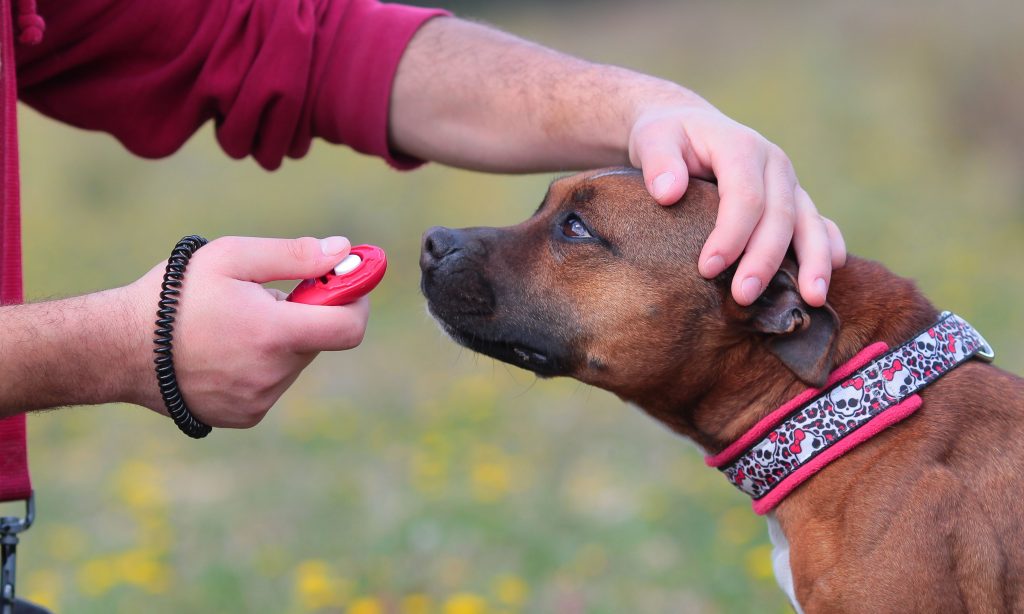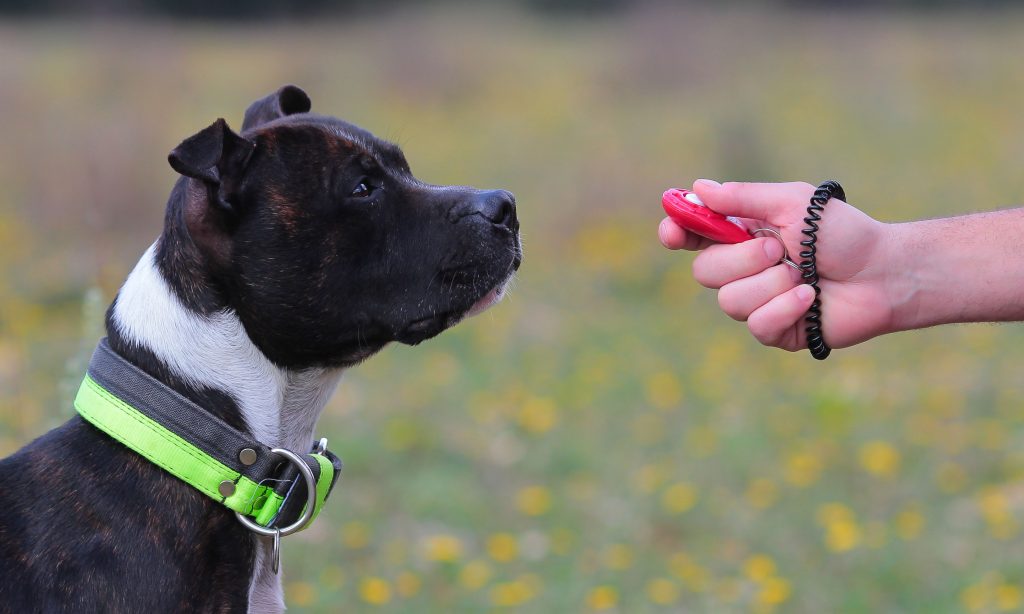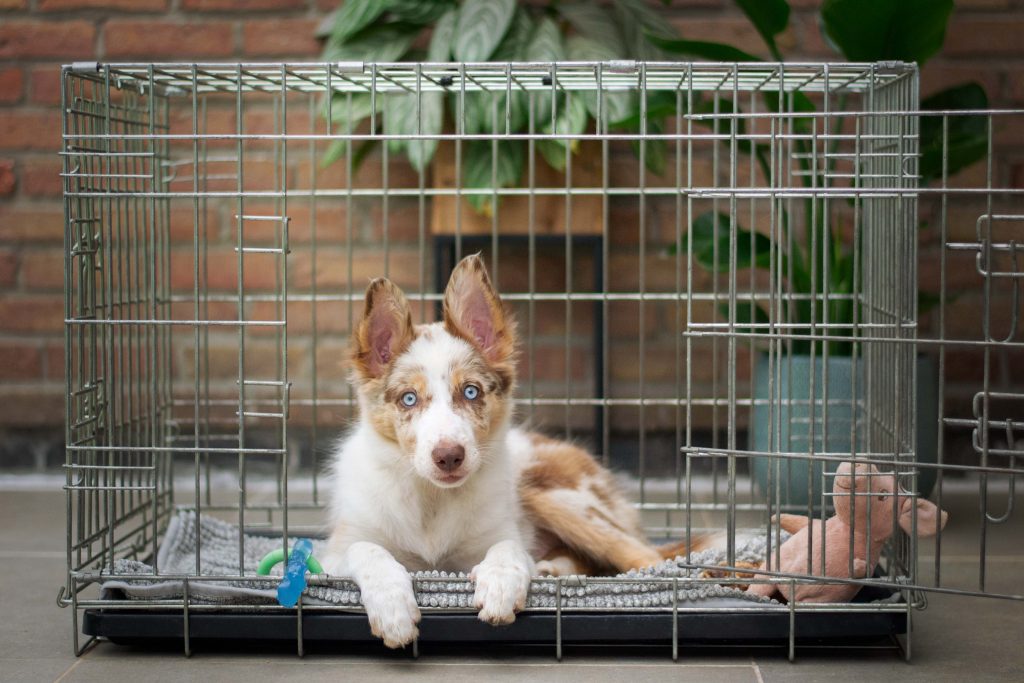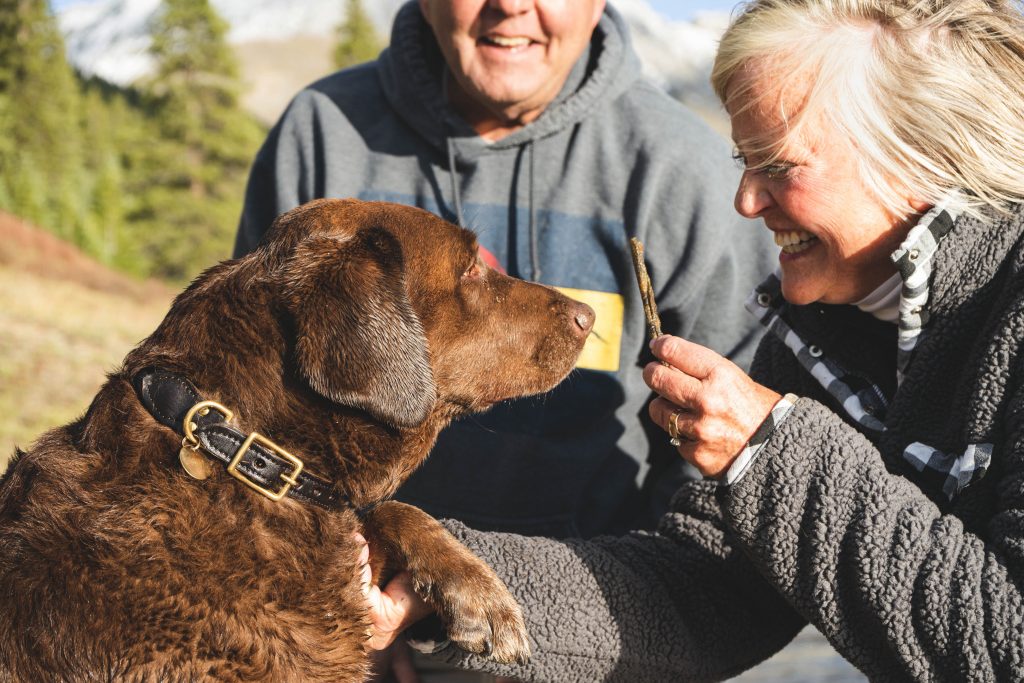Clicker training is a popular and effective training method that uses a small handheld device, called a clicker, to mark desired behaviors and reward them with a treat. By providing information on the benefits of clicker training and how to use it, the blog post could help dog owners to make informed decisions about their training approach and potentially improve their dog’s behavior and obedience. The post could also serve as a resource for dog trainers who are interested in learning more about clicker training.

What is Clicker Training?
Clicker training is a positive reinforcement-based training method that uses a small handheld device, called a clicker, to mark desired behaviors and reward them with a treat. The clicker serves as a secondary reinforcer, meaning that it becomes associated with the reward (in this case, the treat) through repeated use.
When using clicker training, you’ll click the clicker immediately after your dog performs the desired behavior, such as sitting on command, and then give them a treat as a reward. Over time, your dog will learn to associate the click with the treat, and the click will become a powerful reinforcement in and of itself.
Benefits of Clicker Training
There are many benefits to using clicker training with your dog. Some of the most notable benefits include:
- Precision: The clicker allows you to mark a specific behavior with precise timing, which can be especially helpful when teaching more complex behaviors.
- Positive reinforcement: Clicker training is based on positive reinforcement, which means that you’re reinforcing desired behaviors rather than punishing undesired ones. This can help to create a positive, trusting relationship with your dog and encourage them to want to learn and work with you.
- Fast learning: Because the clicker marks the exact moment that behavior is performed, dogs can learn new behaviors more quickly using clicker training.
- Versatility: Clicker training can be used to teach a wide variety of behaviors, from basic obedience commands to more complex tricks and behaviors.

How to Implement Clicker Training Effectively
To implement clicker training effectively, it’s important to follow these steps:
- Choose a high-value treat that your dog loves and use it consistently during training sessions.
- Charge the clicker by clicking it and immediately giving your dog a treat several times in a row. This helps to establish the association between the click and the treat in your dog’s mind.
- Begin training by clicking and treating for very simple behaviors, such as eye contact or sitting.
- Gradually increase the difficulty of the behaviors you’re teaching as your dog becomes more proficient.
- Use the clicker consistently and immediately after the desired behavior is performed in order to maximize the effectiveness of the reinforcement.
- Always end training sessions on a positive note by clicking and treating for behavior that your dog is already proficient at.
In conclusion:
Clicker training is a powerful and effective tool for training dogs of all ages and breeds. By using positive reinforcement and precise timing, you can teach your dog a wide variety of behaviors and improve their obedience and behavior. With patience, consistency, and a little bit of practice, you and your dog can enjoy the many benefits of clicker training.

Frequently Asked Questions
What is a clicker and how does it work?
A clicker is a small handheld device that produces a distinctive clicking sound when pressed. It is used in clicker training as a secondary reinforcer, meaning that it becomes associated with a reward (such as a treat) through repeated use. When using clicker training, you’ll click the clicker immediately after your dog performs the desired behavior, such as sitting on command, and then give them a treat as a reward. Over time, your dog will learn to associate the click with the treat, and the click will become a powerful reinforcement in and of itself.
What are the benefits of using a clicker for dog training?
There are many benefits to using a clicker for dog training. Some of the most notable benefits include precision (the clicker allows you to mark a specific behavior with precise timing), positive reinforcement (clicker training is based on reinforcing desired behaviors rather than punishing undesired ones), fast learning (because the clicker marks the exact moment that behavior is performed, dogs can learn new behaviors more quickly using clicker training), and versatility (clicker training can be used to teach a wide variety of behaviors, from basic obedience commands to more complex tricks and behaviors).
How do I get started with clicker training?
To get started with clicker training, follow these steps: choose a high-value treat that your dog loves and use it consistently during training sessions; charge the clicker by clicking it and immediately giving your dog a treat several times in a row; begin training by clicking and treating for very simple behaviors, such as eye contact or sitting; gradually increase the difficulty of the behaviors you’re teaching as your dog becomes more proficient; use the clicker consistently and immediately after the desired behavior is performed in order to maximize the effectiveness of the reinforcement; and always end training sessions on a positive note by clicking and treating for behavior that your dog is already proficient at.
Is clicker training only for obedience training?
No, clicker training can be used to teach a wide variety of behaviors, including basic obedience commands, tricks, and even more complex behaviors such as search and rescue or therapy work.
Can clicker training be used with all breeds of dogs?
Yes, clicker training can be used with all breeds of dogs. It’s important to remember that every dog is an individual and may have unique training needs and challenges, but with the right approach, any dog can learn using clicker training.



